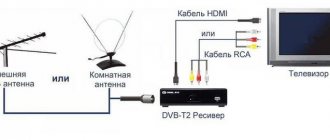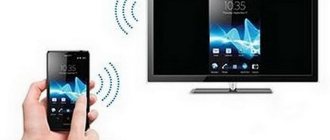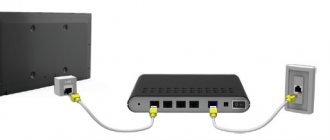What are active 3D glasses
3D technologies are far from new. Who knows what a 3D TV is, also that to watch a movie with 3D effects you need special glasses. Alas, very few people think that how this works for our client. For example, few people know what active 3D is
0.1. Shutter 3D glasses
There are currently three types of 3D glasses:
This article will focus specifically on active 3D glasses.
How 3D imaging technology works
First, we need to understand how the effect of a three-dimensional image is achieved in general. The thing is that a person has two eyes, which are located at some distance from each other. This allows you to see the same object from different perspectives. You can clearly see this if you alternately close one eye and then the other. As you do this, you will notice that the same object changes slightly.
This is explained by the fact that each eye sees a certain part of the object. That is, two different pictures enter the brain. The brain processes them and combines them into one three-dimensional image. It is on this feature of human vision that all existing three-dimensional imaging technologies are built. All of them are based on dividing an image into two pictures that are much different from each other.
In addition, modern 3D films are shot with special cameras that have two lenses, like human eyes. This allows you to shoot subjects from different perspectives, obtaining an image for each eye.
Active 3D glasses
All technologies are based on dividing one image into two pictures - one for each eye. The only difference between technologies is how the separation occurs. In the case of active glasses, this is achieved thanks to the variable fast closing and opening of the shutters on the lenses. Thus, each eye sees a different image.
Active 3D glasses have an infrared sensor that synchronizes with the transmitter on the TV. It is important that both IR devices are synchronized and operate at the same frequency. When watching a 3D movie, the TV sends signals to which the glasses react by closing and opening the shutters.
Connection rules
To connect 3D glasses and a Samsung TV, you will need to design their active system.
This is done by pressing a button and pointing the accessory towards the display. After this, automatic configuration occurs and the equipment is paired.
If you use a passive type of equipment, the connection is much simpler. To do this, the user needs to put on the device and press the key with the required mode on the controller. Passive glasses do not require activation or configuration.
3D equipment for Samsung smart TV is a relatively inexpensive accessory that does not create difficulties in connection and use. Thanks to them, the user receives a high-quality, exciting picture in 3D quality and a lot of positive emotions.
3D Clarity 400 for immersive Full HD 3D viewing: Video
Many people ask the question: Are there universal active 3D glasses that will work with different TV models? Several companies have announced the start of joint cooperation in the development of universal active 3D glasses. These include the following brands:
- Samsung Electronics;
- Panasonic Corporation;
- Sony Corporation;
- X6D Limited (owner of the XPAND 3D trademark).
The union of these companies began its work back in 2011, and already in 2012 the first universal shutter 3D glasses appeared on the market. However, you need to understand that they can only work with TVs of the above brands. Of course, it is quite possible that in the future full-fledged universal models of active 3D glasses will appear on the markets. However, at the moment there are no such ones, and users have to be content with what they have.
What are the benefits of Samsung VR?
4 completely Russian-language channels
Watch news, concerts, films, sports in VR format and in Russian.
More than 20 channels
Over 20 channels with over 10,000 free VR videos. Now you don't need to search for content all over the Internet. He is here.
Convenient content search and mobile 2D version
Now it's faster and easier to find interesting videos.
Downloading videos
Download the video you like to your device and watch it at any time, regardless of the Internet.
How to watch VR videos on a computer?
You can watch immersive video not only from smartphones, but also from a PC - and from a computer you get a clearer picture, the screen split is less noticeable, an image is formed for each eye, which improves the perception of the video. The helmet is configured according to individual instructions - the software is installed, the device is connected to HDMI and USB outputs, and put on the head. To calibrate, you need to perform a number of actions - tilts, rotations, turns.
Advanced models of VR helmets are equipped with IR cameras, which are located at a short distance from the user in the room for watching a movie and track the position in space. The most popular PC helmets and consoles are several models:
- Oculus Rift S is a device that appeared in 2021, position tracking is carried out by the cameras of the helmet itself, the computer screen must have a 2K resolution, the connection interface is DP instead of HDMI. The model is an optimal ratio of price and functionality, has numerous advantages, the only disadvantage is not very high sound quality, but this can easily be solved with good headphones. This is the helmet that is presented in our club!
- HTC Vive is a headset released in 2021, the kit includes wireless controllers, a connector for connecting to a PC, base stations, and a headset. The device must be connected to the connector using HDMI, USB, and power cables. The connector is connected to the outlet and the computer, base stations are installed in the corners of the room to track the position, and configuration is performed. The helmet is equipped with its own screen with a wide viewing angle, the only downside is its heavy weight, which can make watching movies for a long time uncomfortable.
- PS VR is a Sony PlayStation virtual reality headset introduced to the market in the fall of 2021. The model positions itself as the most accessible and inexpensive, which corresponds to reality, however, it entails obvious disadvantages - low screen resolution, heavy weight, imperfect tracking of position in space and an abundance of wires. The connection is made via an HDMI splitter, setup takes about a minute, and a virtual assistant is built-in.
VR headsets for the console are configured similarly to a PC - the helmet and camera are connected to the game console, the installed virtual reality application is launched, and synchronization is carried out.
How 3D imaging technology works
First, we need to understand how the effect of a three-dimensional image is achieved in general. The thing is that a person has two eyes, which are located at some distance from each other. This allows you to see the same object from different perspectives. You can clearly see this if you alternately close one eye and then the other. As you do this, you will notice that the same object changes slightly.
This is explained by the fact that each eye sees a certain part of the object. That is, two different pictures enter the brain. The brain processes them and combines them into one three-dimensional image. It is on this feature of human vision that all existing three-dimensional imaging technologies are built. All of them are based on dividing an image into two pictures that are much different from each other.
In addition, modern 3D films are shot with special cameras that have two lenses, like human eyes. This allows you to shoot subjects from different perspectives, obtaining an image for each eye.
What do you need to watch VR videos and films?
People who are far from the world of virtual reality may think that watching films in VR is incredibly difficult, expensive, requires certain technical training and is inaccessible to a wide range of film connoisseurs. In fact, there are no difficulties; to watch VR films you only need a few components:
- VR glasses or helmet directly - after starting the video, the smartphone is installed in a special compartment of the glasses, they are put on the head, the image is calibrated, PC helmets are synchronized with the computer, where the settings are made;
- a phone with a display from 4.7 to 6 inches that supports video in virtual reality format - when you rotate the body, the image should rotate without slowing down or pausing;
- a program for watching movies in VR - there are a lot of them, there are paid and free ones, you can choose any application;
- a downloaded file with a VR movie, access to an online cinema or YouTube hosting where you will watch the movie.
If you plan to watch virtual reality videos online, you will need high Internet speed. If the file is downloaded in advance (for example, from Torrents), network access will not be required in the future.
Samsung TV Blog – QLED TV | Frame | Premium UHD TV
From not very smart to really smart remote control in 60 years
Remote controls
have been around almost as long as televisions themselves. If you have relatives familiar with the leading TV technology of the 1950s, they may just remember the first (but finicky) wired TV remotes that could trip your pets or children. Additionally, there were remote controls that worked fine if you pointed them at the sensor correctly. Over time, more and more devices that connected to the TV became more popular. Your grandparents may have never had the need or desire to connect a new device to their then "newfangled" TV, but you or one of your tech-savvy friends probably connected at least one such device to the TV you knew. . Nowadays, after taking several turns on the road to television technology, we have a new standard: unified remote control and automatic detection. In short, One Remote Control and Auto Detection make it easy to watch your favorite shows on your Samsung smart TV, and we're sure that once you experience it for yourself, you'll wonder how you ever lived without it.
Firstly, what is auto detection?
The TVs that are now found in most homes have a variety of connected entertainment devices such as over-the-top devices, set-top boxes, Blu-ray players and gaming consoles. Managing connections can be challenging. But automatic detection makes it easier to find connected devices. Have you ever connected multiple HDMI devices to your TV only to be confused about which device is on which HDMI channel? Perhaps you're familiar with scrolling through the TV/AV channel input selection menu while trying to find your DVD player? Are you ready to give up? There is no need for this as automatic detection solves these problems. It knows more about your various devices than you expect. When a device is connected through one of the Quantum Dot TV's HDMI ports, Auto Detect automatically finds it and displays the device name. No longer wondering which gaming device you have: HDMI1 or 2.
What is a remote control?
The One Remote Control is a universal remote control, but it's no ordinary device. Remember how we just mentioned all those super gadgets, set-top boxes, Blu-ray players and gaming consoles you can find in your home these days? The problem is that these devices don't have one standard method of remote communication—infrared, Bluetooth, and Wi-Fi signals are sent around your living room through various remote controls that independently control these peripherals. One Remote Control takes care of it all as a universal remote control with a difference. Sure, it's small, but it's also a powerful and elegant solution to the problem of seamlessly managing all those different devices connected to your quantum dot TV.
Is One Remote Control difficult to set up?
Not at all. One of the great things about your quantum dot TV is that it does the lion's share of the setup so you don't have to. As mentioned earlier, simply plug in your HDMI device and the quantum dot TV will automatically recognize it. If necessary, the TV can also ask you some questions. The TV then wirelessly teaches One Remote Control what it needs to know to control the newly connected device - in the background, of course. If you want to use the connected device, it's as simple as selecting it in the Smart Hub, then pointing the remote to a real device and transfer control to it. Are you ready for fun!
Advanced smart remote control for smart entertainment
Do you want entertainment to be convenient? Various devices meant for fun don't have to become an unmanageable mess. Just think of all the remotes you can put away in that overcrowded box where outdated technology goes to die. With one remote control and auto-sensing, your Quantum Dot TV knows how to make it easier to access and control multiple devices for smooth, enjoyable entertainment, not to mention a clean living room table and fewer battery changes! Isn't it time you took a closer look at Samsung's smart TV, which is a quantum dot TV with a single remote control?
Topics: Smart remote control, single remote control, universal remote control, auto detection, smart hub, smart TV, quantum dot TV, quantum dot
.
How to watch VR videos without dizziness and nausea?
Users who are just beginning to explore the world of virtual reality often encounter unpleasant sensations such as dizziness and nausea when watching VR films. To avoid such symptoms, beginners are advised to:
- immerse yourself in VR gradually - first for 5-10 minutes, then increasing the viewing time to 1 hour;
- do not walk around the room while watching - it is better to take a sitting position;
- choose movies with a high frame rate (maximum quality) - then there will be no spots, jitters, or blurry spots on the screen;
- purchase glasses only after trying them on, making sure that they are comfortable - models with the ability to adjust the distance between the lenses have proven themselves positively.
You should not watch VR films in stuffy rooms; an influx of fresh air and good ventilation will help avoid unpleasant sensations. If you feel unwell in your glasses, take them off immediately - a short dive is enough for now.
Watching VR films and videos is not at all difficult, the main thing is that you have glasses or a virtual reality helmet, as well as a modern smartphone model that supports this format, or a PC with advanced characteristics. There will definitely be no problems with installing the application and searching for VR movies - all this is available absolutely free, you can download the file in advance or use online viewing services.
And if you don’t really want to spend money on buying equipment just for a couple of uses, you can try going to a virtual reality club
How to Connect 3D Glasses to a Sony TV ~ NET.Gadget
Sony TDG-BT500A 3D glasses: description, properties, advantages
In just half a century, the TV has gone through a mind-boggling evolutionary path: from huge tube boxes with a small black-and-white screen and a vague image to luxurious thin panels of impressive size that are capable of conveying not only the colors of the world around us, but also its additional volume.
Television technologies are constantly improving. Quite recently, a real breakthrough was the emergence of 3D films in cinemas. They amazed the audience with their grandeur and realism. The film industry made big profits by churning out what was left for our client to do with new films that drew full houses. And now you watch 3D content while sitting at home in front of the TV, on modern TV sets using special glasses.
3D glasses Sony TDG-BT500A
Sony is famous for its ability to quickly master leading technologies and create thoughtful and reliable products based on them with a guarantee. The 3D sphere was no exception. Sony TDG-BT500A 3D glasses are designed for branded LCD TVs with support for active 3D technology.
Nowadays, two methods of transmitting large images using a TV are more popular: active and passive method. Sony has chosen option 1 for its own devices. To understand the pros and cons of Sony active 3D glasses, you need to understand their operating principle.
An active 3D TV alternately and in a short period of time transmits individual frames that are slightly shifted relative to your loved one. For this reason, the effect is that the brain perceives the image as larger. Sony 3D glasses are made using watery crystals that act as a shutter, a curtain for the eyes. They are synchronized with the TV and at the appropriate moment alternately darken the left or right lens. In other words, the human eye sees strictly defined frames, combining into a deep picture close to reality.
In passive 3D technology, volume is also conveyed by using two offset frames, each of which is intended for different eyes. But both frames have different polarization and are contained in one screen using horizontal alternating lines. Polarized glasses allow the eyes to see only certain lines that are assembled into a suitable frame and create a 3D effect.
Sony Bravia 3D Options
Unpacking and review of changing 3D glasses for SONY Bravia KDL-50W808C.
CO? Review of changing 3D glasses for SONY Bravia KDL-50W808C
What is the difference between active and passive 3D? The FOTOS online store is aware of this situation. Website: .
The main drawback of passive technology is the loss of image quality by half, because the eyes see only half of the vertical lines. Therefore, people who want to get an image very close to reality do not hesitate to choose technology with active 3D. The costs are greatly compensated by the pleasure of watching movies, sports matches, and music videos in the highest quality.
Main properties
- Development: LCD shutter, active.
- Compatible devices: TVs Sony KDL-55W905A, Sony KDL-40W905A, and of course Sony KDL-46W905A.
- Year of release of compatible TV models: 2013.
- Type of connection to the TV: Bluetooth.
- Power: one CR2025 battery.
- Working time when fully charged. 100 hours
- Width/depth/height: 147 × 170 × 46 mm.
- Glasses weight: 36 g.
Pros of Sony TDG-BT500A 3D glasses
- They guarantee the highest level of image quality and support Full HD.
- They are famous for their trouble-free operation; they quickly and effortlessly connect to the TV via a radio signal (Bluetooth).
- Of course, Sony 3D glasses can be worn over regular prescription glasses without losing their ability.
- Comfortable, lightweight, and do not tire your eyes while watching movies for a long time.
- Ergonomic: the silicone fit does not put pressure on the bridge of the nose, the temples are not attached aggressively, so the glasses are equally comfortable for patients with different shapes and heights of ears.
- Watch TV in any position, Sony 3D glasses provide an excellent picture from different viewing angles.
- They support SimulView gaming technology for PlayStation consoles: two people, wearing glasses, can of course play on the same TV without seeing each other’s screens.
Disadvantages
The main drawback of Sony 3D glasses is their high price; unfortunately, the worldview here is true that a truly high-quality thing costs its own money. By purchasing branded glasses that have been tested by time and thousands of consumers, the consumer receives guaranteed reliability, durability and access to the magical world of 3D content with the highest resolution.
An additional disadvantage of the glasses is the very large side gaps, through which a lot of light falls on our eyes, preventing us from watching TV during the day. However, your eyes quickly adapt to a similar inconvenience and stop noticing it, especially while watching an interesting movie that is difficult to distinguish from reality.
net-gadget.ru











